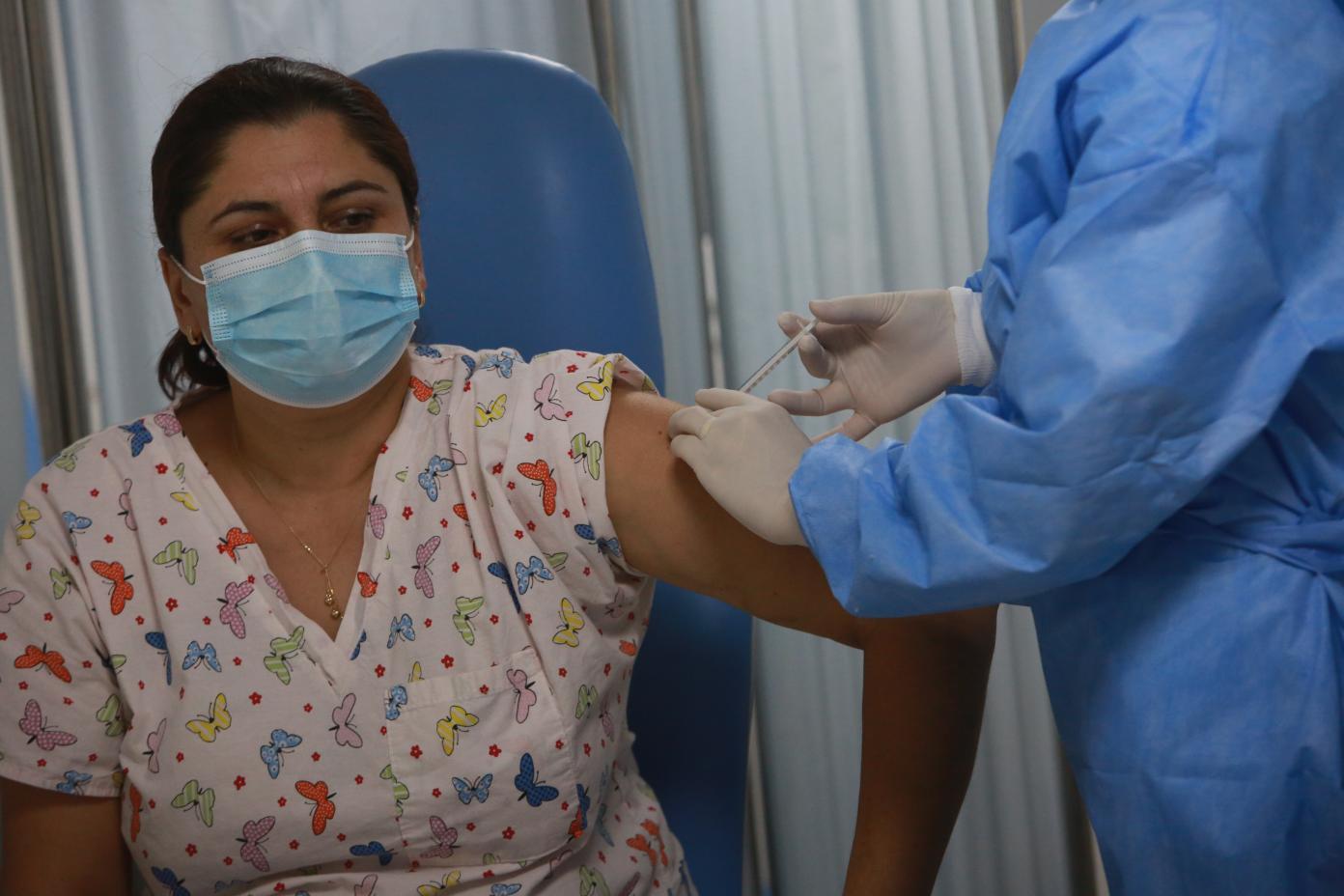Why we must focus on reaching the furthest behind first
Speed of COVID-19 vaccination efforts is key
February 24, 2022

COVID-19 shows no signs of letting up. Though the worst of the Omicron wave may be passing in some places, daily case counts are still reaching into the millions and some estimates show that by March, 60 percent of the world will have been infected with this highly transmissible variant.
Inequity has defined the global vaccine roll-out, widening the poverty gap between low- and high-income countries and leaving the potential for more life-threatening variants to emerge.
Amid this spread, the socio-economic impacts of COVID-19 continue to deepen their hold, particularly in poorer countries. This threatens the central promise of the 2030 Agenda which is to leave no one behind, and to reach the furthest behind first. However, almost 90 percent of people in low-income countries haven’t had even a single vaccine dose.
Because speed is such an essential factor in helping countries to recover from the worst effects of COVID-19, it is not only that low-income countries need support to get adequate doses, those doses need to get into people’s arms.
Our analysis finds that low-income countries face a much slower economic recovery than middle- and high-income countries, deepening existing social and economic inequalities.
We must prioritize the furthest behind first, and redouble our efforts to ensure that pandemic recovery lays the foundation for a more equal world that is better prepared for future pandemics.
Socio-economic impact of vaccine inequity
Though vaccination roll-outs in low-income countries did increase at the end of 2021 and beginning of 2022, with COVAX delivering its one billionth COVID-19 vaccine dose last month, this represents only a fraction of what is needed. Vaccination rates in many low-income countries continue to lag behind those of high-income countries, especially in Africa where 50 out of 54 countries are not on track to meet the WHO’s 70 percent vaccination target by mid-2022.
As a consequence low-income countries face devastating socio-economic impacts. If the vaccination rate in low-income countries had been equal to that of high-income countries, at 54.3 percent, in September of last year, their GDP for 2021 would have increased by US$16.27 billion, providing vital resources for addressing other health and development challenges, such as education and poverty. Countries with the largest unrealized gain in GDP are Ethiopia, the Democratic Republic of the Congo and Uganda which could have gained US$2.52 billion, US$2.40 billion and US$2.16 billion, respectively.
The costs of a slow roll out are high and many countries could have advanced their economic recovery if they had reached 40 percent vaccination coverage, the target originally set for the end of 2021.
In Kenya, Uganda, Egypt and Cameroon, missing the 40 percent target has resulted in almost US$18.8 billion lost in GDP, while Iraq alone is estimated to have lost US$5.76 billion.
Data shows that slow recovery disproportionately hits the poorest countries. If low-income countries do not receive the support and vaccines to rapidly speed up their vaccination rollouts, economic recovery will remain out of reach.
Reducing inequities, investing in pandemic preparedness
Investments, actions and partnerships for reducing inequities and better pandemic preparedness are crucial. This goes beyond vaccines. To address the current global inequities the ACT-Accelerator plans to deliver almost one billion diagnostic tests and treat 120 million patients with COVID-19 therapeutics by September 2022. Diagnostics, in particular, are critical to managing the pandemic and preventing the spread of the virus.
Focusing efforts on specific countries and communities is also integral to a truly equitable pandemic response and to ensuring that vaccine doses make it to those in need. Data from UNDP, WHO and University of Oxford’s Global Dashboard for Vaccine Equity show that low-income countries would have to increase healthcare spending by a disproportionate amount to vaccinate their populations compared to high-income countries, revealing and exacerbating inequities that were present even before the pandemic began. With the global COVID-19 vaccine supply steadily increasing, lower-income countries must receive support to ensure they not only have adequate doses, but they are also able to effectively convert them into vaccinations.
To address these and other challenges, UNDP works closely with governments and partners on deploying integrated development solutions, such as scaling the use of digital support for vaccination and health systems, and using data for vaccine equity. One example is the hyperlocal data tool to address inequities within countries, green COVID-19 vaccination, and support universal health coverage. Such measures can help forge a more equitable, resilient and effective pandemic response that not only leaves no one behind but better equips the world to more equitably face future health crises.
Make no mistake: this pandemic will not be the last we face. Will we act on the lessons from the past two years to ensure that countries are better prepared for those to come in the future?

 Locations
Locations
